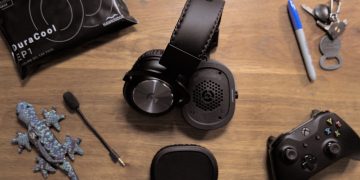HyperX has carved out a formidable reputation in the gaming industry, known for producing high-quality peripherals that cater to both casual gamers and professional esports athletes. Since its inception, HyperX has focused on delivering exceptional performance, comfort, and durability in its gaming headsets, making it a trusted name among gamers worldwide.
With a product lineup that includes the acclaimed HyperX Cloud series and the cutting-edge HyperX Cloud II Wireless, the brand continues to innovate and set new standards in gaming audio. In this article, we will explore the evolution of HyperX gaming headsets, highlighting their key features, technological advancements, and the factors that contribute to their popularity and success in the competitive gaming market.
Whether you’re a seasoned gamer or new to the scene, understanding what makes HyperX headsets stand out can help you make an informed choice for your gaming audio needs. HyperX, a prominent brand in the gaming industry, is well-known for its high-performance headsets and gaming peripherals.
This article provides a comprehensive overview of HyperX, delving into its origins and establishment, current ownership, the evolution of its diverse product lineup, and addressing common issues users may experience with HyperX headsets.
When Was HyperX Founded?
HyperX was founded in 2002 as a division of Kingston Technology Company, a global manufacturer of memory products and technology solutions.
The brand was initially established to cater to the high-performance needs of gamers, overclockers, and tech enthusiasts, focusing primarily on producing high-speed memory modules. This strategic move allowed Kingston to address the growing demand for reliable and fast memory solutions in the gaming and technology markets.
Who Owns HyperX?
For nearly two decades, HyperX was owned by Kingston Technology Company. However, in 2021, HP Inc. acquired the HyperX brand from Kingston for $425 million.
This acquisition enabled HP to enhance its footprint in the gaming and peripherals market by integrating HyperX’s well-established product line and brand reputation into its portfolio. Despite the change in ownership, HyperX has continued to operate under its recognized brand name, maintaining its commitment to high-quality gaming products.
HyperX Product History
HyperX began its product journey with high-performance memory modules, quickly gaining a reputation for reliability and speed among gamers and tech enthusiasts. Over time, HyperX expanded its product offerings to include a variety of gaming peripherals and accessories. The brand’s initial expansion included USB flash drives and solid-state drives (SSDs), leveraging Kingston’s strengths in these areas.
A significant milestone for HyperX was its entry into the gaming peripherals market, starting with the launch of the HyperX Cloud headset series. These headsets were well-received for their comfort, sound quality, and durability, establishing HyperX as a major player in the gaming headset market. Following this success, HyperX introduced other gaming peripherals such as keyboards, mice, and mouse pads, each designed to meet the specific needs of gamers.
Best Selling HyperX Gaming Headsets
HyperX offers a range of gaming headsets that have garnered popularity among gamers worldwide. Among its best-selling models are the HyperX Cloud II, Cloud Alpha, and Cloud Stinger.
The HyperX Cloud II headset has gained widespread acclaim for its combination of comfort, performance, and affordability. Featuring virtual 7.1 surround sound, memory foam ear cushions, and a detachable noise-canceling microphone, the Cloud II delivers an immersive gaming experience suitable for both casual and competitive gamers.
The HyperX Cloud Alpha is praised for its dual-chamber drivers, which provide clear and distinct audio for enhanced immersion in games. Its durable aluminum frame, detachable cable, and comfortable memory foam ear cushions make it a popular choice among gamers seeking reliability and comfort during long gaming sessions.
The HyperX Cloud Stinger stands out for its affordability and lightweight design, making it an ideal option for budget-conscious gamers. Despite its lower price point, the Cloud Stinger delivers solid audio performance, a swivel-to-mute noise-canceling microphone, and intuitive volume controls, making it a popular choice among entry-level gamers.
Overall, the popularity of HyperX gaming headsets can be attributed to their combination of performance, comfort, and affordability. With a focus on delivering reliable and high-quality gaming gear, HyperX has established itself as a trusted brand among gamers seeking immersive and enjoyable gaming experiences.
Common HyperX Headset Problems
While HyperX headsets are generally well-regarded for their quality and performance, some users have reported common issues. Durability concerns are frequently mentioned, particularly regarding the wear and tear of ear cushions and headbands over time with heavy use. Additionally, users of wireless models have occasionally reported connectivity issues, such as intermittent disconnections or challenges in pairing the headset with devices.
Another recurring issue involves the microphone quality, with some users experiencing problems like low volume or background noise interference. These issues can sometimes be resolved through firmware updates or adjustments in device settings, but they have nonetheless been sources of frustration for some users.
Despite these challenges, HyperX headsets remain popular choices, appreciated for their overall sound quality, comfort, and value. HyperX’s ongoing efforts to address customer feedback and improve their products contribute to their sustained reputation in the gaming peripherals market.









